Carcassone
Begun by the Gauls and then conquered and enlarged by, in turn, the Romans, Visigoths, Moors and Franks, Carcassonne was a major fortress controlling the plains of southwest France between the Mediterranean and the Pyrenees.
Additions and modifications made from the 12th to 14th C produced a self-sufficient and impenetrable citadel, La Cité, which is the largest fortress in Europe. The walls are 1.9 miles long and contain 52 massive towers.
After the 13th C assimilation into the Kingdom of France, it served as an important military post on the frontier to the Crown of Aragon territories
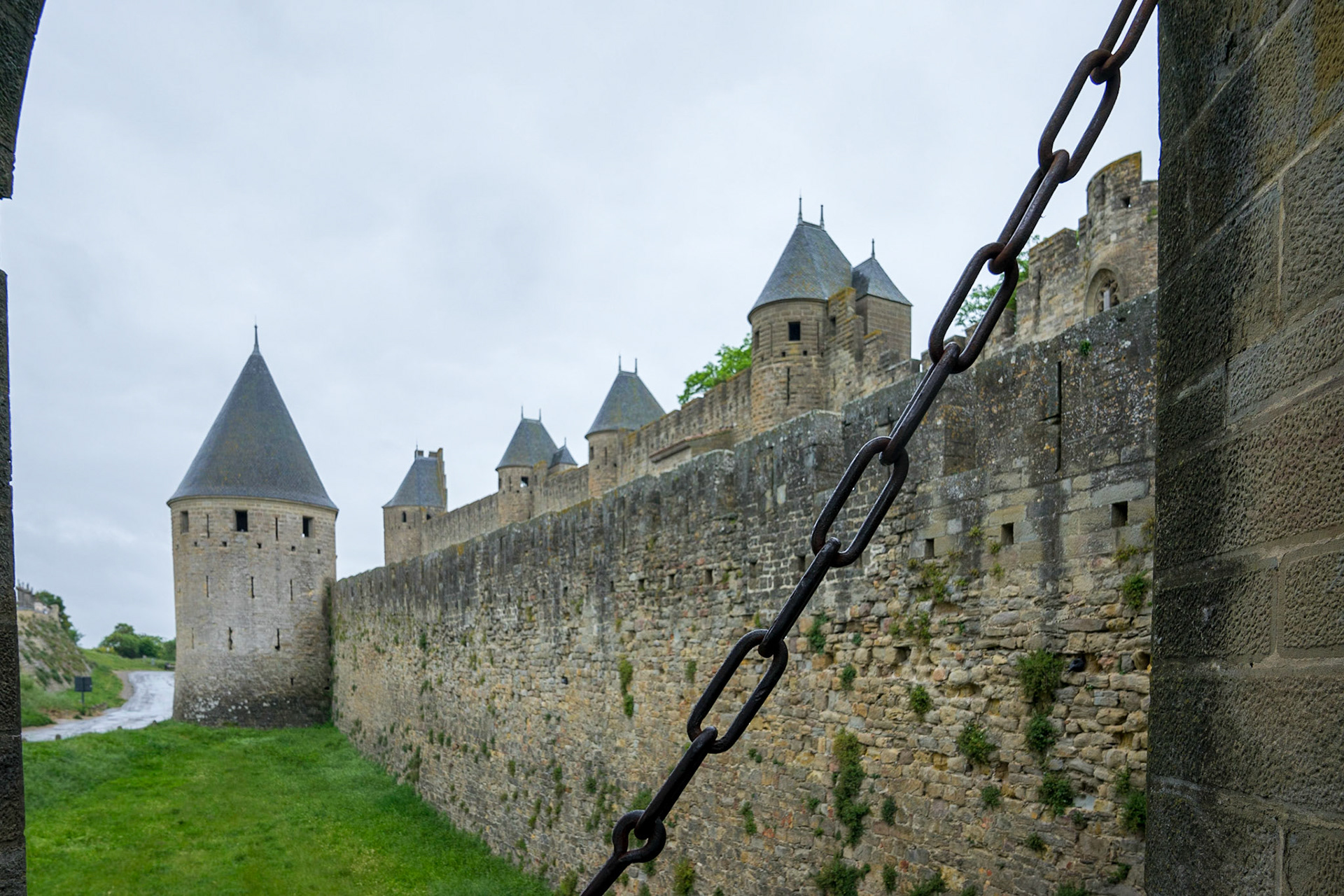
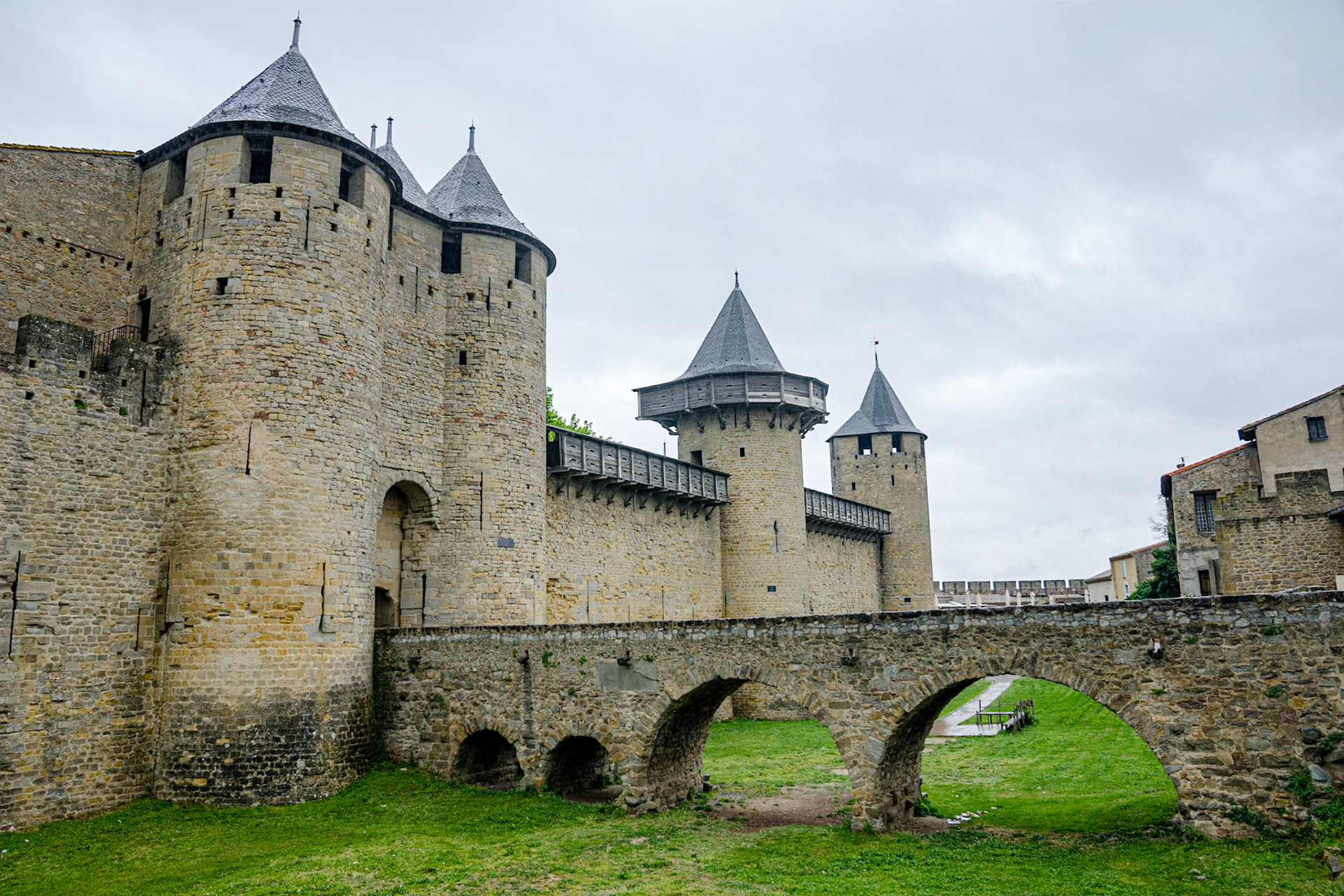


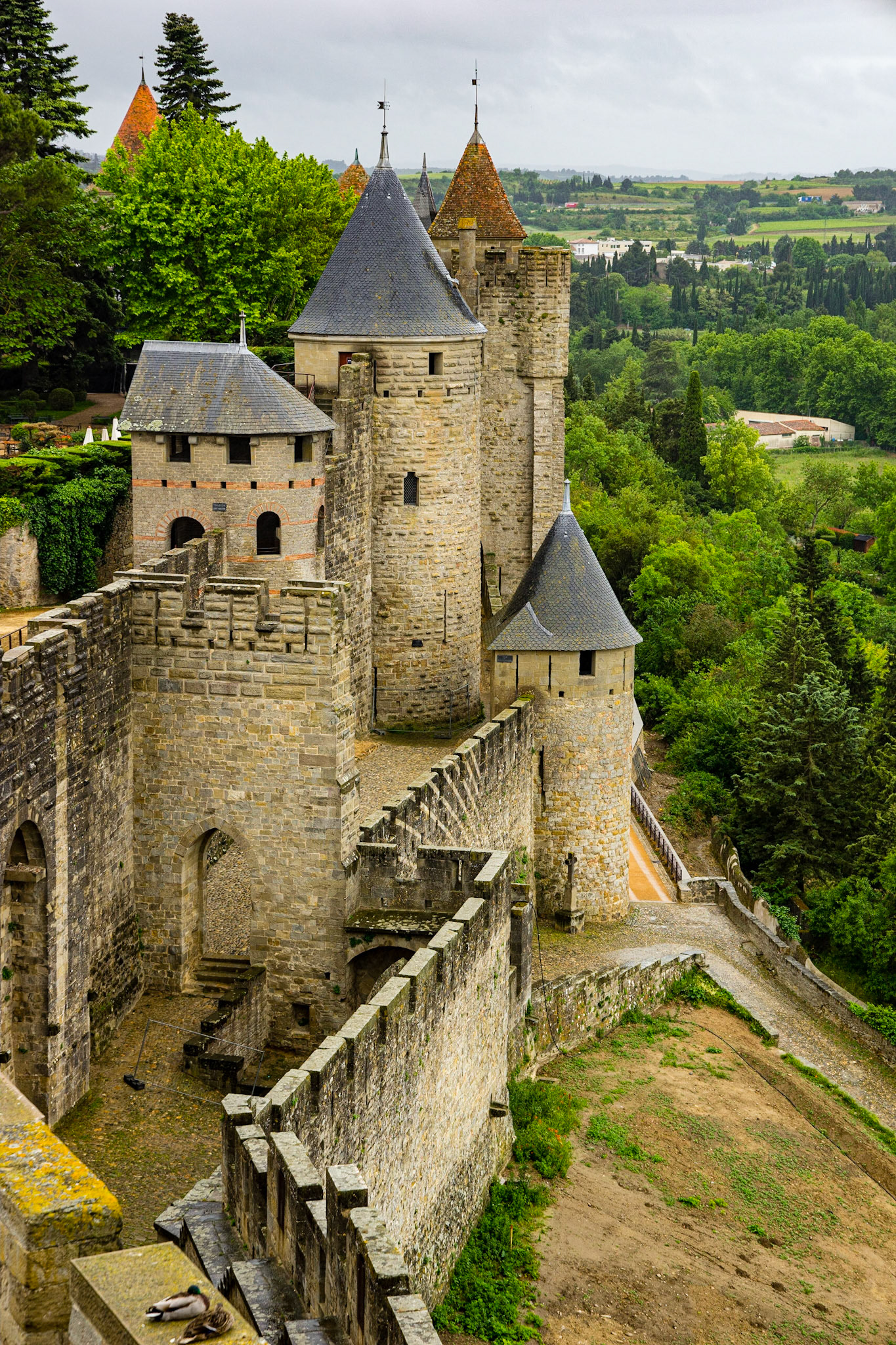
Towers


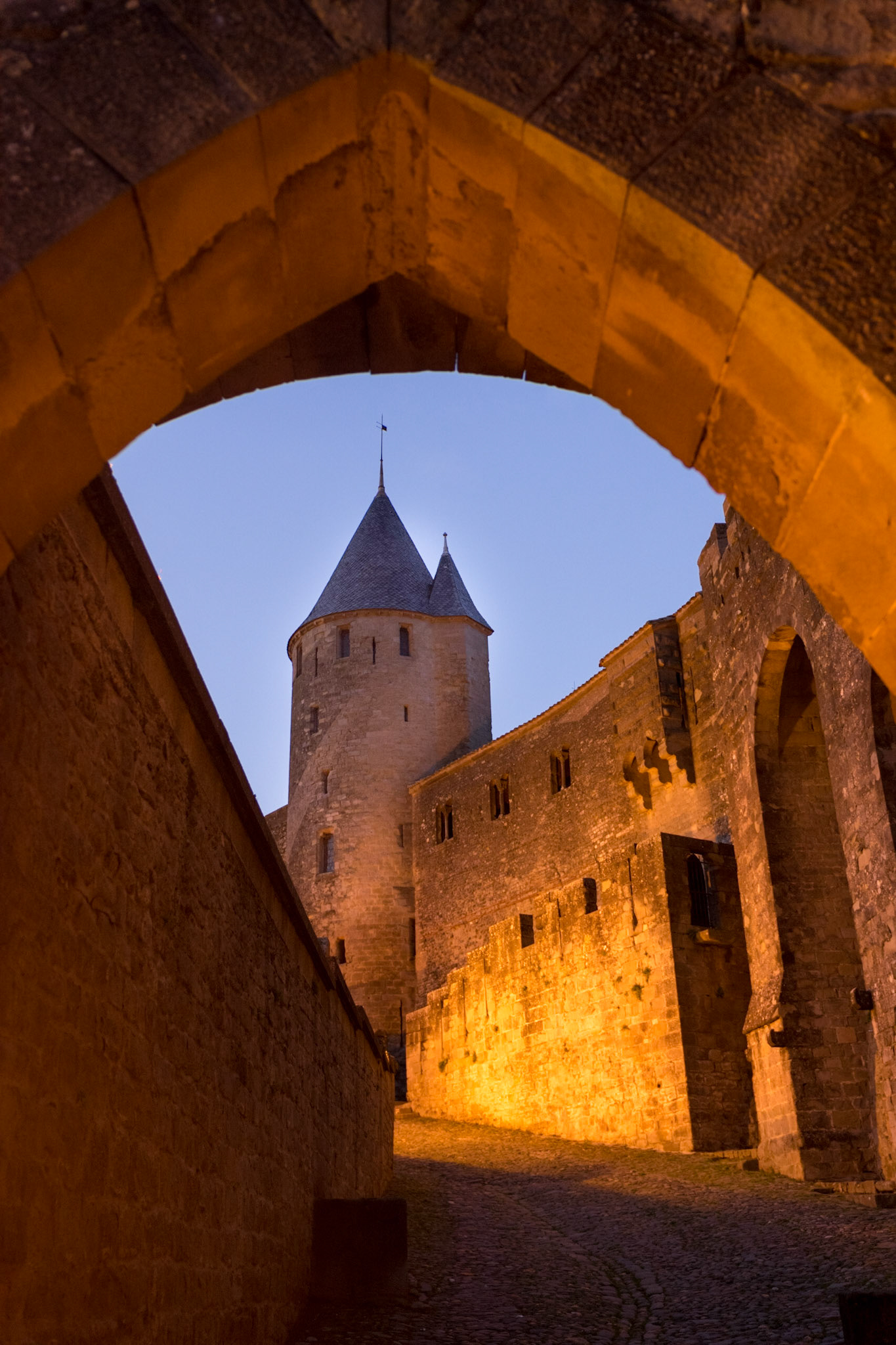
The Citadel at Night
Peyrepertuse
This Cathar castle, located high in the French Pyrenees is one of the "Five Sons of Carcassonne" all situated atop 'unassailable' rocky peaks. The name is derived from an Occitan word meaning Pierced Rock.
The lower part of the castle was built by the kings of Aragon in the 11th Century and the higher part by the French King Louis IX.
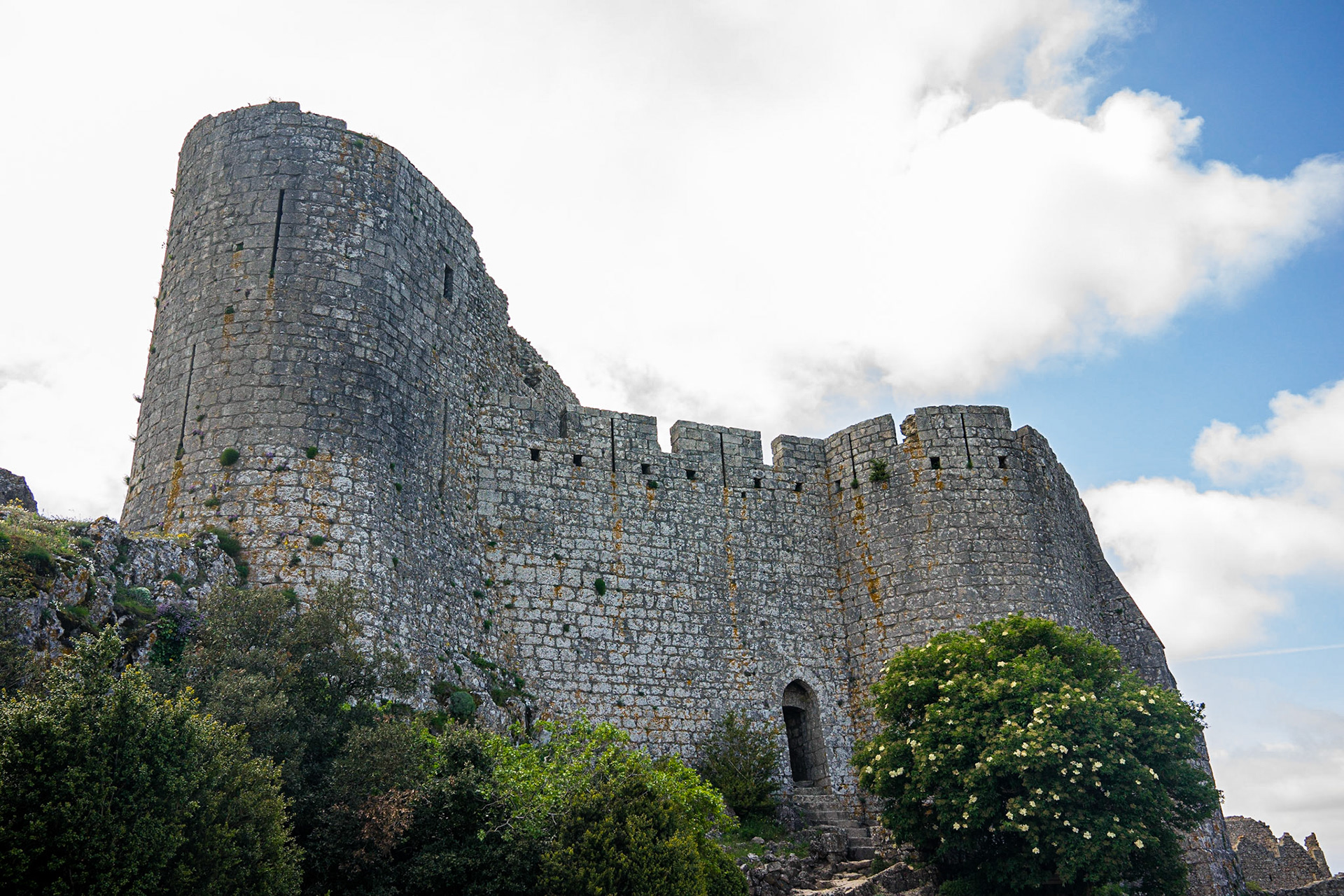

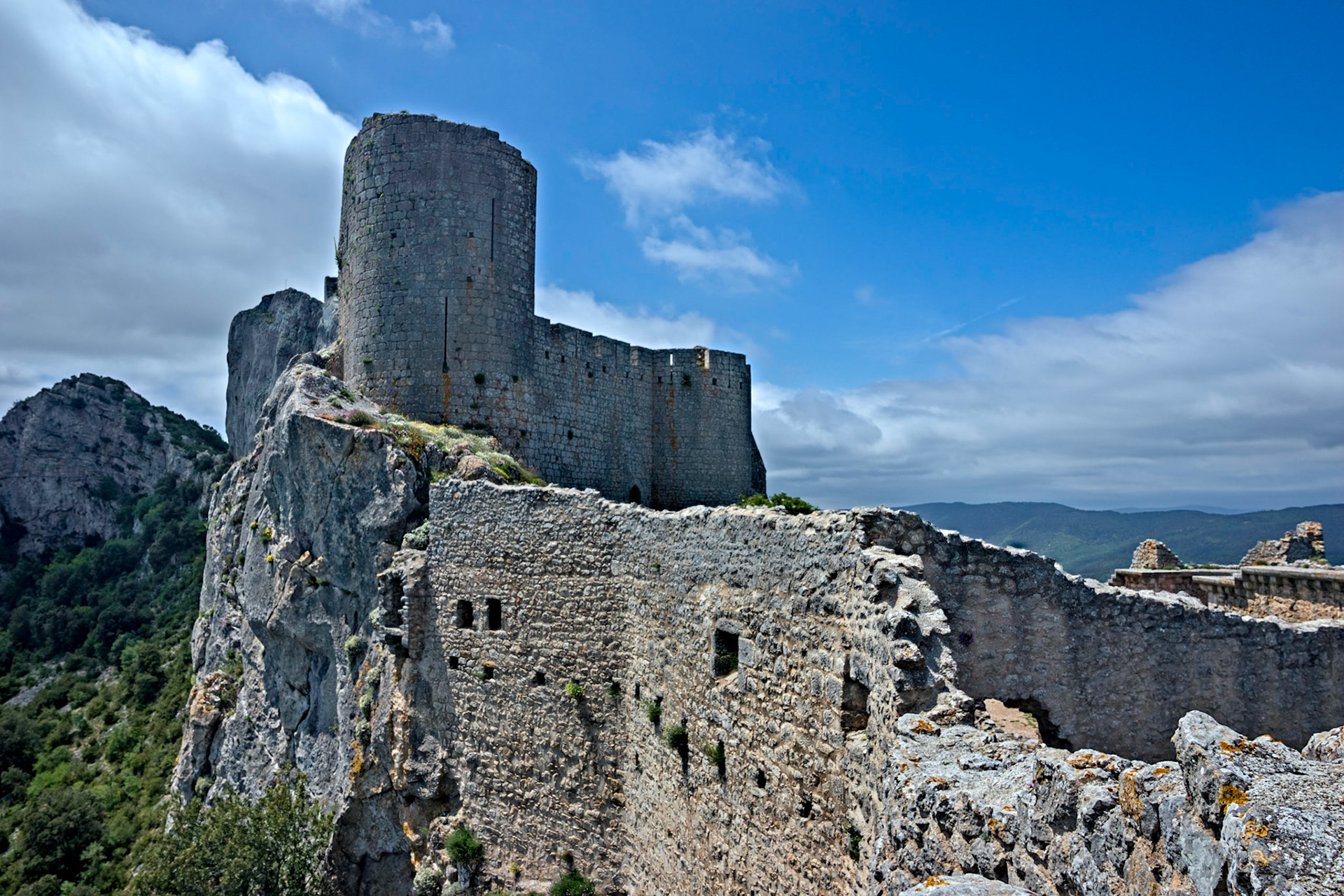

Fortress de Salses
In Salses-le-Château
Built by the Catalans at the end of the 15th century, the fortress guarded the former frontier between Spain and France. It is a prime example of the transition from a mediaeval château, with a keep, cylindrical towers and long curtain walls (such as Carcassonne and Peyrepertuse), and the modern fortress, with a rigorously geometric and part-buried structure. Its walls are around 10 metres thick, and the fortress is divided over seven levels served by a maze of corridors and multiple interior defensive chicanes.
The fortress was built between 1497 and 1504, at the order of Ferdinand II of Aragon . It was designed by engineer Francisco Ramiro Lopez, the king’s commander and artillery master, at a frontier site with a source of spring water, most useful in the event of a siege,

